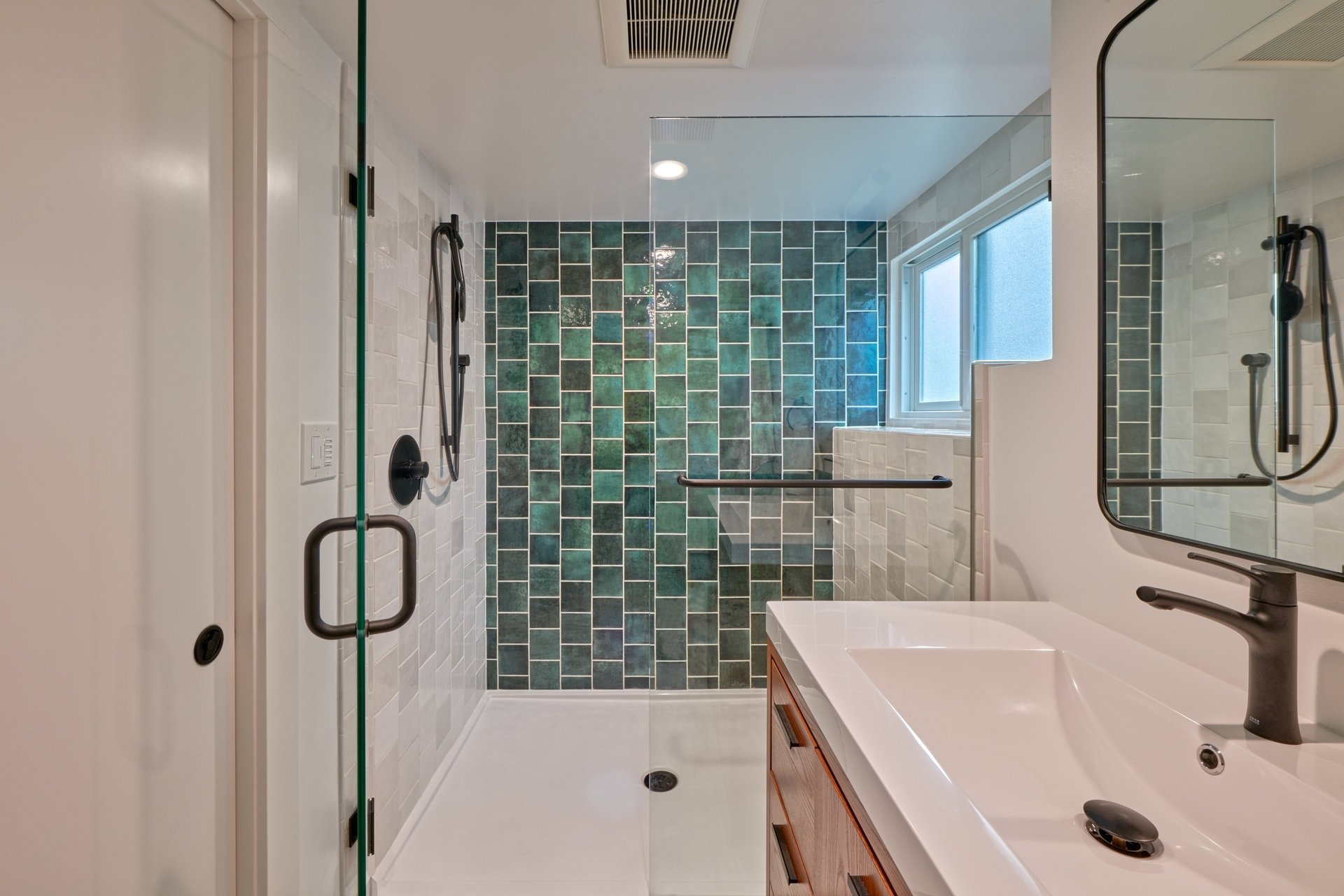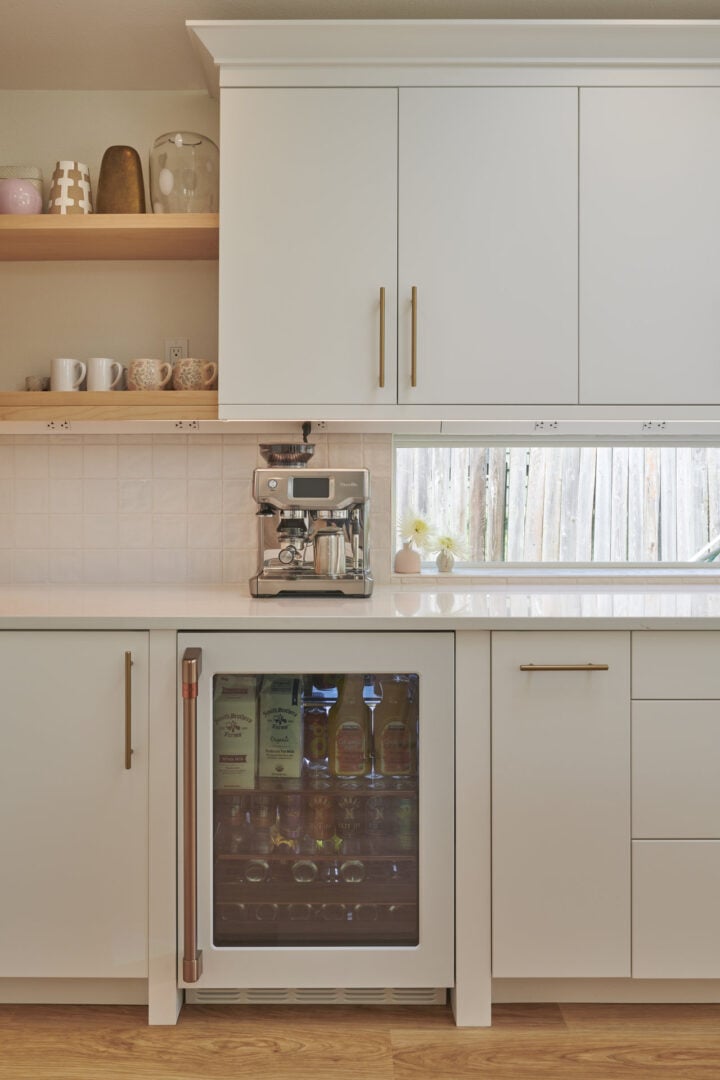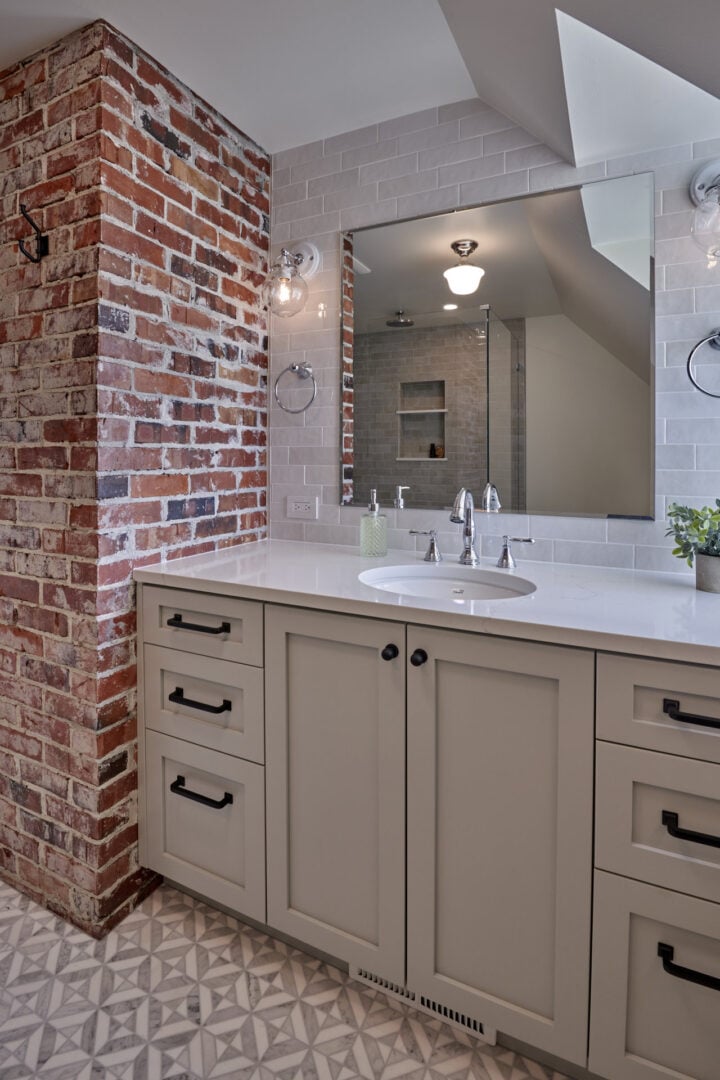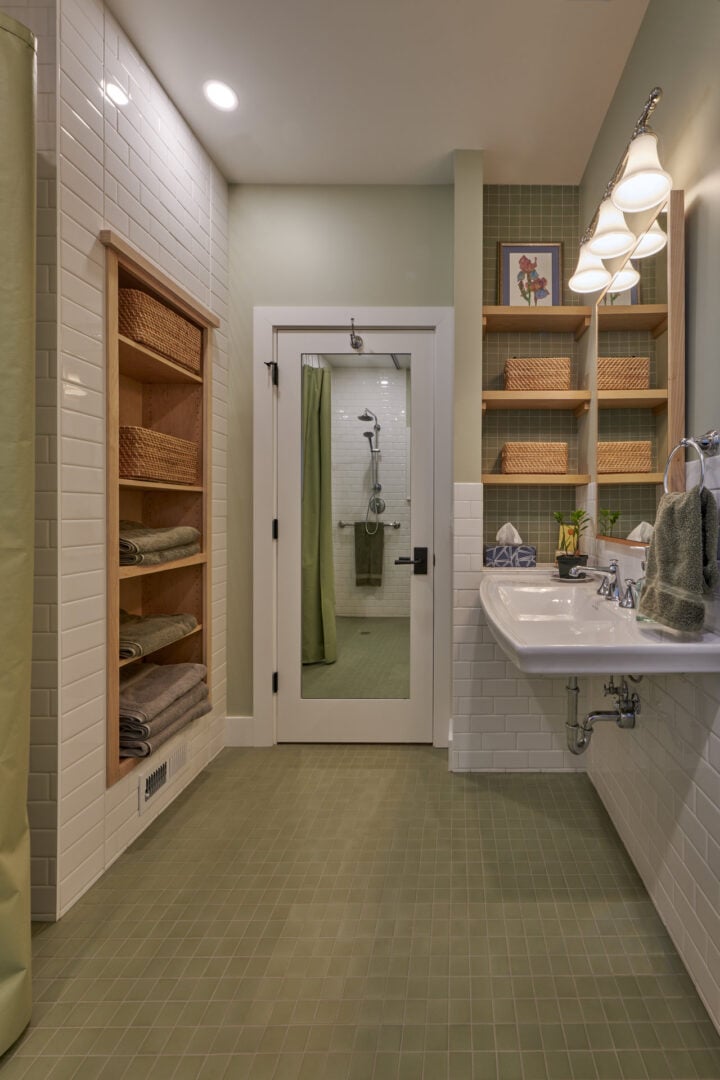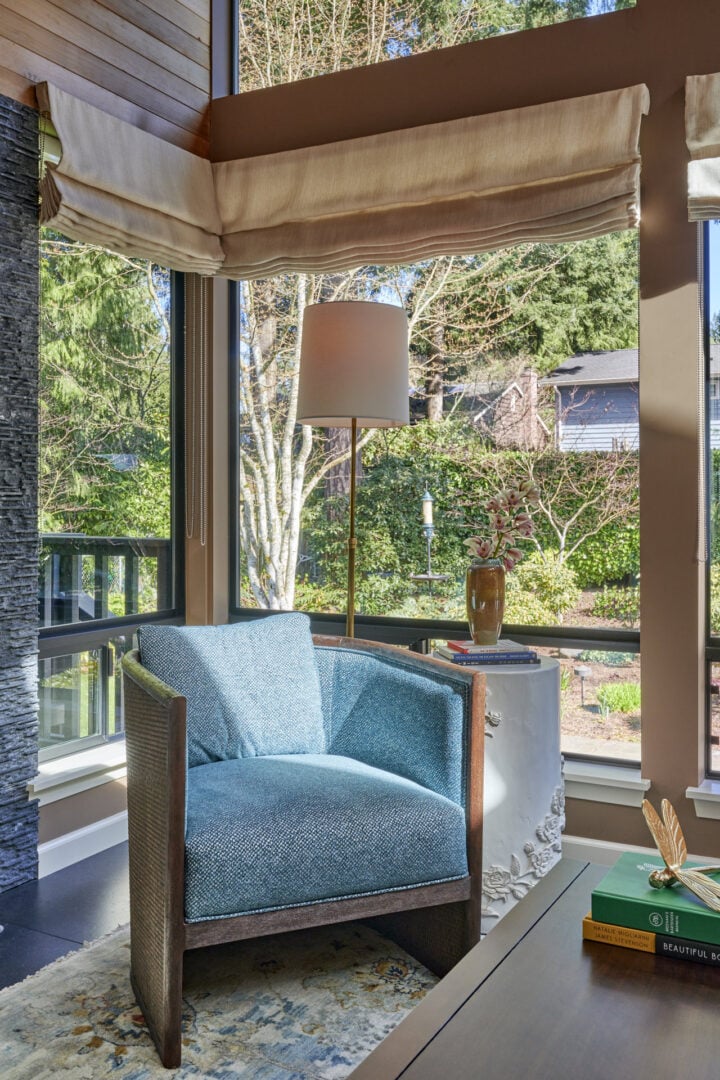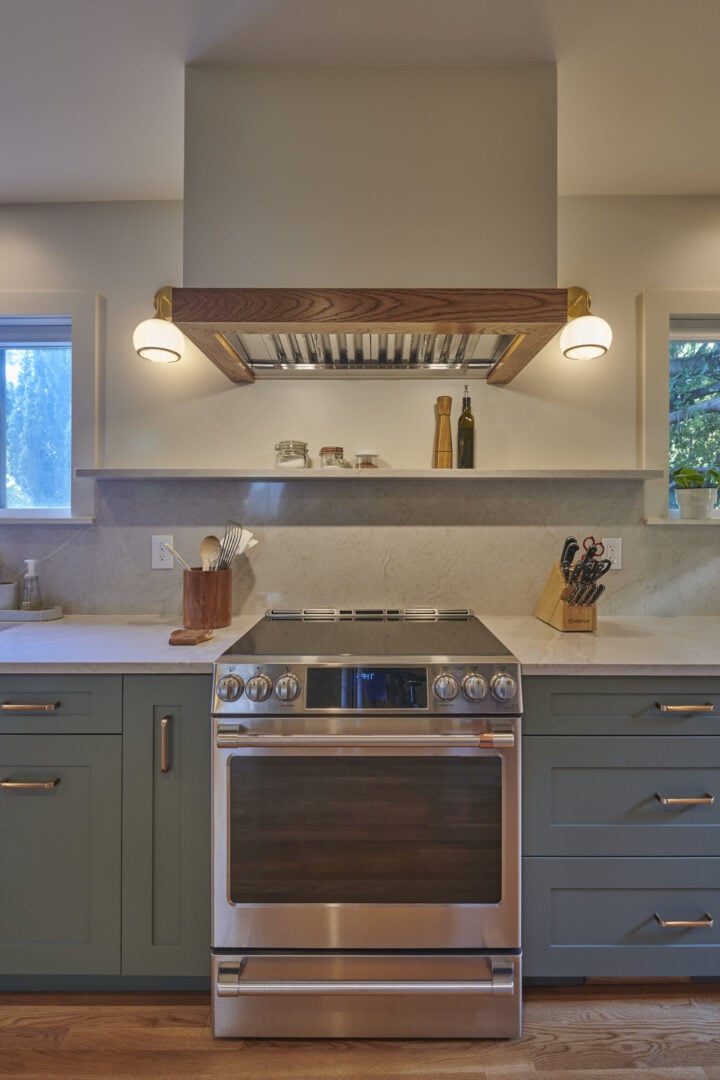If you are remodeling your Seattle home or considering options for replacing your heating system, you have many choices. Installation price, operating cost, efficiency, and features vary widely between systems. In this post, I will go over the types of HVAC systems that are most common in Seattle and which are best suited to our unique mild climate and lower utility rates.
Natural gas furnace
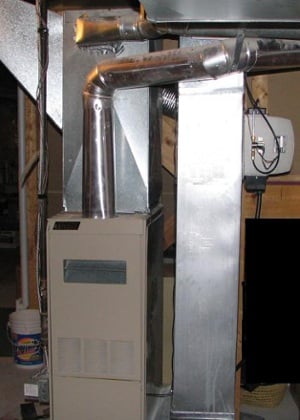 I’ll start with a natural gas furnace because it’s the most common heating system in Seattle homes. Warm air is delivered to the rooms of your home via ducts, and cool air is collected via cold air return vents. Gas furnaces are rated for efficiency. Older units from the 1970s might be rated 65%, meaning 35% of the heating energy is wasted during the combustion process. Today’s models range from a minimum of 78% up to 98.5%. If your home already has ducts, replacing your heating system with a new, efficient gas furnace is a relatively straightforward process. If you are adding on to your home or retrofitting a home without ducting, installing a new gas furnace system can be quite costly.
I’ll start with a natural gas furnace because it’s the most common heating system in Seattle homes. Warm air is delivered to the rooms of your home via ducts, and cool air is collected via cold air return vents. Gas furnaces are rated for efficiency. Older units from the 1970s might be rated 65%, meaning 35% of the heating energy is wasted during the combustion process. Today’s models range from a minimum of 78% up to 98.5%. If your home already has ducts, replacing your heating system with a new, efficient gas furnace is a relatively straightforward process. If you are adding on to your home or retrofitting a home without ducting, installing a new gas furnace system can be quite costly.
Pros of a gas furnace
- Reasonable cost to install if ducting exists.
- Can put out a lot of BTUs (heat energy) so can heat up your house quickly and may be the only practical option for an older home with poor insulation.
- Can last a long time, especially simpler units with fewer moving parts.
- Works well during very cold weather.
Cons of a gas furnace
- Expensive to install if ducting and gas line to house don’t already exist.
- Produces exhaust gases, which must be vented to the outside of the home and which pose a risk if there is a malfunction.
- Ductwork collects and stirs up dust in home.
- Noisier than some heat pump systems.
See also: Maintenance Checklist: Your Home’s Interior
Oil furnace
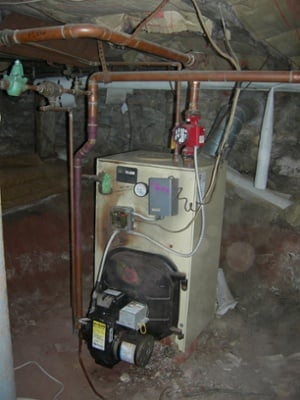 Like natural gas furnaces, oil furnaces are rated for various degrees of efficiency. Older oil furnaces can be very inefficient, while most new ones have a rating of 80% – 90% efficiency. Top-of-the-line models are rated up to 98%. Most people replacing an existing oil furnace will choose some other type because of high fuel costs and maintenance.
Like natural gas furnaces, oil furnaces are rated for various degrees of efficiency. Older oil furnaces can be very inefficient, while most new ones have a rating of 80% – 90% efficiency. Top-of-the-line models are rated up to 98%. Most people replacing an existing oil furnace will choose some other type because of high fuel costs and maintenance.
Pros of an oil furnace
- Have few moving parts and can last for many years.
- Put out a lot of BTUs.
Cons of an oil furnace
- Oil furnaces can get clogged with soot and require frequent cleaning.
- You will need an on-site oil storage tank.
- Oil must be delivered by truck to your home.
Ducted heat pump
 A ducted heat pump looks like a large central air conditioner unit that sits outside your home. Heat pumps run on electricity and work like air conditioners in reverse, using a compressor to “pull” heat out of the outdoor air. This allows them to produce two to three times as much heat as a standard electric heater (like a space heater) with the same amount of electricity. They can be connected to your existing ductwork, if you are replacing a gas or oil furnace.
A ducted heat pump looks like a large central air conditioner unit that sits outside your home. Heat pumps run on electricity and work like air conditioners in reverse, using a compressor to “pull” heat out of the outdoor air. This allows them to produce two to three times as much heat as a standard electric heater (like a space heater) with the same amount of electricity. They can be connected to your existing ductwork, if you are replacing a gas or oil furnace.
Pros of a ducted heat pump
- Extremely energy efficient.
- Low operating cost.
- Can also cool your home in the summer.
- Take advantage of existing ductwork.
Cons of a ducted heat pump
- More expensive than lower-efficiency gas furnaces.
- Expensive to install if ductwork does not exist.
- Less efficient when outdoor temperatures drop to very low levels.
Ductless “mini-split” heat pumps
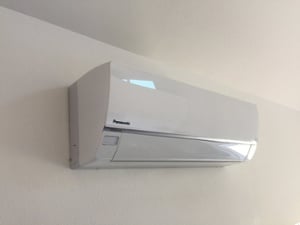 Instead of tying in to the ducts in your home, a mini-split heat pump has an indoor head unit that mounts on a wall. Because up to 20% of the heat energy produced by a central HVAC unit may be lost to leaks in your ducts, a ductless unit has a built-in efficiency advantage. Ductless heat pumps are great for additions because they don’t require any new ductwork to be installed. Because a unit is installed in each room or area you wish to heat, you can have greater control over the temperature of each zone, which can save energy. Some mini-splits even have occupancy sensors that automatically raise the temperature in the room when you are present.
Instead of tying in to the ducts in your home, a mini-split heat pump has an indoor head unit that mounts on a wall. Because up to 20% of the heat energy produced by a central HVAC unit may be lost to leaks in your ducts, a ductless unit has a built-in efficiency advantage. Ductless heat pumps are great for additions because they don’t require any new ductwork to be installed. Because a unit is installed in each room or area you wish to heat, you can have greater control over the temperature of each zone, which can save energy. Some mini-splits even have occupancy sensors that automatically raise the temperature in the room when you are present.
Pros of ductless heat pumps
- Inexpensive to install.
- Low maintenance.
- Most energy-efficient option.
- Does not produce harmful combustion gases.
- Extremely quiet.
- Also provides air conditioning.
- Zoned heating.
- Rebates of up to $1,200 are available from Seattle City Light.
Cons of ductless heat pumps
- Require multiple units to heat every area of home.
- Indoor head unit may be obtrusive.
- Less efficient when outdoor temperatures are extremely low.
Radiant heat
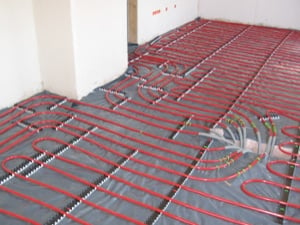 This category of heating system is not as common. Most radiant-heat systems deliver heat to each room via warm-water coils in the floor. Other systems (usually single-room systems) use electricity. The water used in a radiant system can be heated in a natural gas or electric boiler, or even tied to a heat pump.
This category of heating system is not as common. Most radiant-heat systems deliver heat to each room via warm-water coils in the floor. Other systems (usually single-room systems) use electricity. The water used in a radiant system can be heated in a natural gas or electric boiler, or even tied to a heat pump.
Pros of radiant heat
- Very comfortable on your feet, creating a cozy ambiance.
- Totally silent.
- No moving air, which minimizes dust and promotes a healthy indoor environment.
- Efficient use of energy; you feel warm even when the air temperature is lower.
- Very even heat that doesn’t have the temperature spikes of forced air.
Cons of radiant heat
- Can be more expensive to install.
- Can be difficult to service because warm-water lines are often buried in concrete sub floor.
Electric zone heat
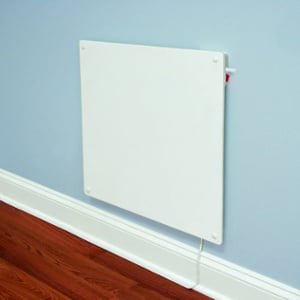 We often install small built-in electric space heaters when we remodel or add on a room. Unlike heat pumps, these units are self-contained. They are also safe compared to older-style electric baseboard heaters. They come in many different forms: wall-mounted units that are great for small spaces like bathrooms, cove heaters that are similar to baseboard heaters but are tucked safely up by the ceiling, and ceiling-mounted radiant heat panels that provide a gentle sunshine-like warmth from above.
We often install small built-in electric space heaters when we remodel or add on a room. Unlike heat pumps, these units are self-contained. They are also safe compared to older-style electric baseboard heaters. They come in many different forms: wall-mounted units that are great for small spaces like bathrooms, cove heaters that are similar to baseboard heaters but are tucked safely up by the ceiling, and ceiling-mounted radiant heat panels that provide a gentle sunshine-like warmth from above.
Pros of electric zone heat
- Inexpensive to purchase and install.
- Very flexible and can be designed to heat spaces of any size.
- Can save energy if the temperature in unoccupied rooms is turned down.
Cons of electric zone heat
- Not as energy-efficient as newer heat-pump technology.
- Our electricity rates are low in Seattle, but these can still be expensive to operate.
Comparing operating costs
The layout of your home, your existing heating system, personal preference, and many other factors will determine which type of HVAC system best suits you. But one of the most important considerations when comparing the various types of systems is the cost to operate them. Energy prices fluctuate constantly, so it is hard to make accurate long-term predictions. However, a local HVAC contractor, Evergreen Home Heating and Energy compared several different types of systems for a typical 2,000-square-foot home using heat-loss calculation software and found the following annual operating costs:
- Oil furnace: $4,385/year
- Gas furnace (80% efficiency): $1,870/year
- Gas furnace (96% efficiency): $1,450/year
- Heat pump (8.5 HSPF): $1,150/year (includes cooling in summer)
See also: Seattle Heating: The 3 Best Heating Systems for Puget Sound Homes [Evergreen Home Heating & Energy]
Starting a remodel
If you are planning to remodel your home, a good place to start is with a licensed contractor or designer. Our team here at CRD has decades of experience renovating older Seattle homes and will handle all the details to make sure your renovated spaces are cozy and warm in the winter and cool and comfortable in the summer. If you are interested in discussing your unique situation, please don’t hesitate to get in touch.
Note: We make no claims or warranties as to the completeness or accuracy of the information on this page. We encourage you to confirm all information you read here and consult a roofing professional. Any action you take based on the information on this website is strictly at your own risk.
